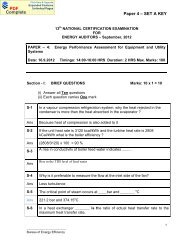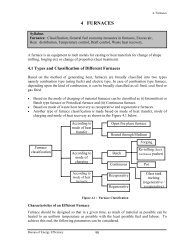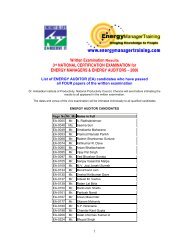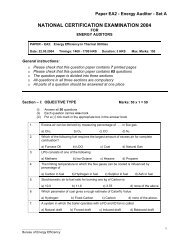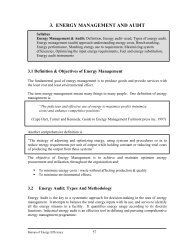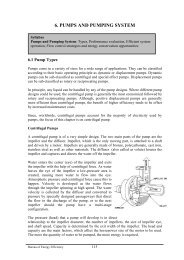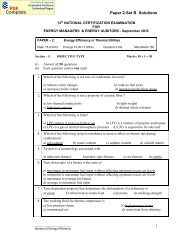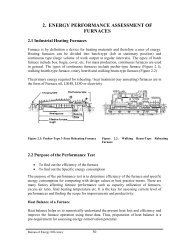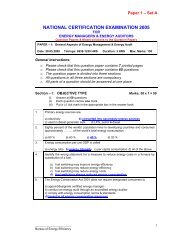13. WASTE MINIMISATION AND RESOURCE CONSERVATION
13. WASTE MINIMISATION AND RESOURCE CONSERVATION
13. WASTE MINIMISATION AND RESOURCE CONSERVATION
Create successful ePaper yourself
Turn your PDF publications into a flip-book with our unique Google optimized e-Paper software.
<strong>13.</strong> Waste Minimisation and Resource Conservation<br />
<strong>13.</strong>2 Classification of Waste Minimisation (WM) Techniques<br />
The waste minimisation is based on different techniques. These techniques are classified as<br />
hereunder.<br />
WM TECHNIQUES<br />
RECYCLING<br />
SOURCE<br />
REDUCTION<br />
PRODUCT<br />
MODIFICATION<br />
Onsite<br />
recovery<br />
and reuse<br />
Creation of<br />
Useful byproducts<br />
Process<br />
Change<br />
Good<br />
House-<br />
Keeping<br />
Input<br />
Material<br />
change<br />
Better<br />
process<br />
control<br />
Equipment<br />
modification<br />
Technology<br />
change<br />
Source Reduction<br />
Under this category, four techniques of WM are briefly discussed below:<br />
a) Good Housekeeping- Systems to prevent leakages & spillages through preventive<br />
maintenance schedules and routine equipment inspections. Also, well-written<br />
working instructions, supervision, awareness and regular training of workforce would<br />
facilitate good housekeeping.<br />
b) Process Change: Under this head, four CP techniques are covered:<br />
(i)<br />
Input Material Change - Substitution of input materials by eco-friendly (nontoxic<br />
or less toxic than existing and renewable) material preferably having<br />
longer service time.<br />
Bureau of Energy Efficiency 163



